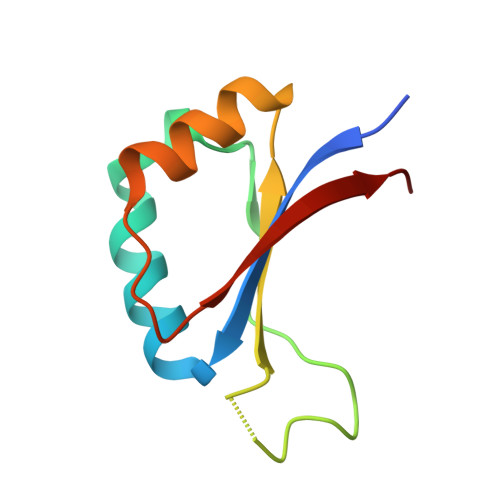Design and characterization of an enhanced repressor of human papillomavirus E2 protein.
Bose, K., Meinke, G., Bohm, A., Baleja, J.D.(2011) FASEB J 25: 2354-2361
- PubMed: 21482558
- DOI: https://doi.org/10.1096/fj.10-176461
- Primary Citation of Related Structures:
3MI7 - PubMed Abstract:
Papillomaviruses are causative agents of cervical and anogenital cancers. The viral E2 protein mediates viral DNA replication and transactivation of viral oncogenes and thus represents a specific target for therapeutic intervention. Short forms of E2, E2R, contain only the C-terminal dimerization domain, and repress the normal function of E2 due to formation of an inactive heterodimer. Using structure-guided design, we replaced conserved residues at the dimer interface to design a heterodimer with increased stability. One E2R mutant in which histidine was replaced by a glutamate residue showed preferential heterodimer formation in vitro, as well as an increase in plasticity at the interface, as a result of histidine-glutamate pair formation, as observed spectroscopically and in the crystal structure, determined to 2.2-Å resolution. In addition, the enhanced E2R showed greater repression of transcription from E2-responsive reporter plasmids in mammalian cell culture. Recent advances in protein delivery into the cell raise the possibility of using exogenously added proteins as therapeutic agents. More generally, this approach may be used to target the subunit interfaces of any multisubunit protein having a similar mechanism of action.
Organizational Affiliation:
Department of Biochemistry, Tufts University School of Medicine, 136 Harrison Ave., Boston, MA 02111, USA.

















